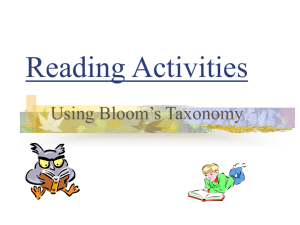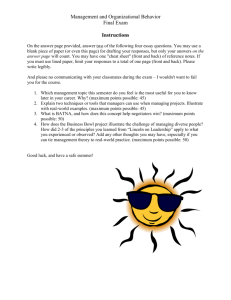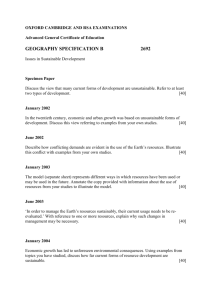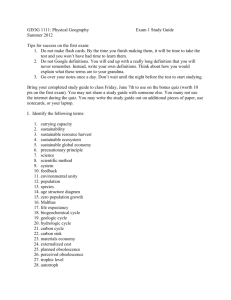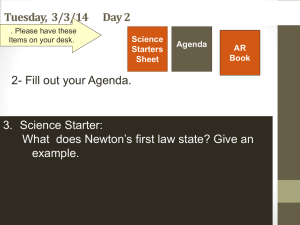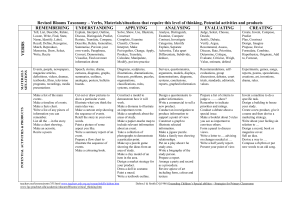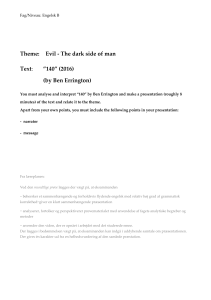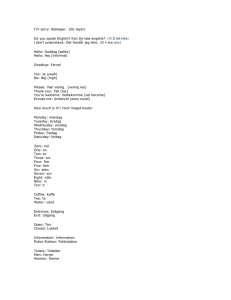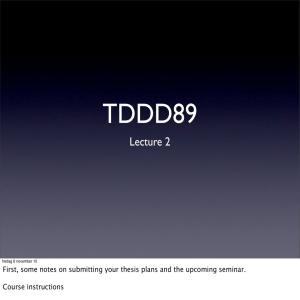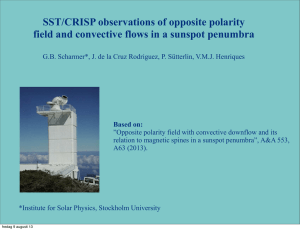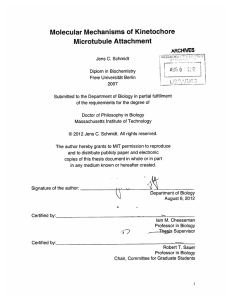Part II (40%) - Universitetet i Oslo
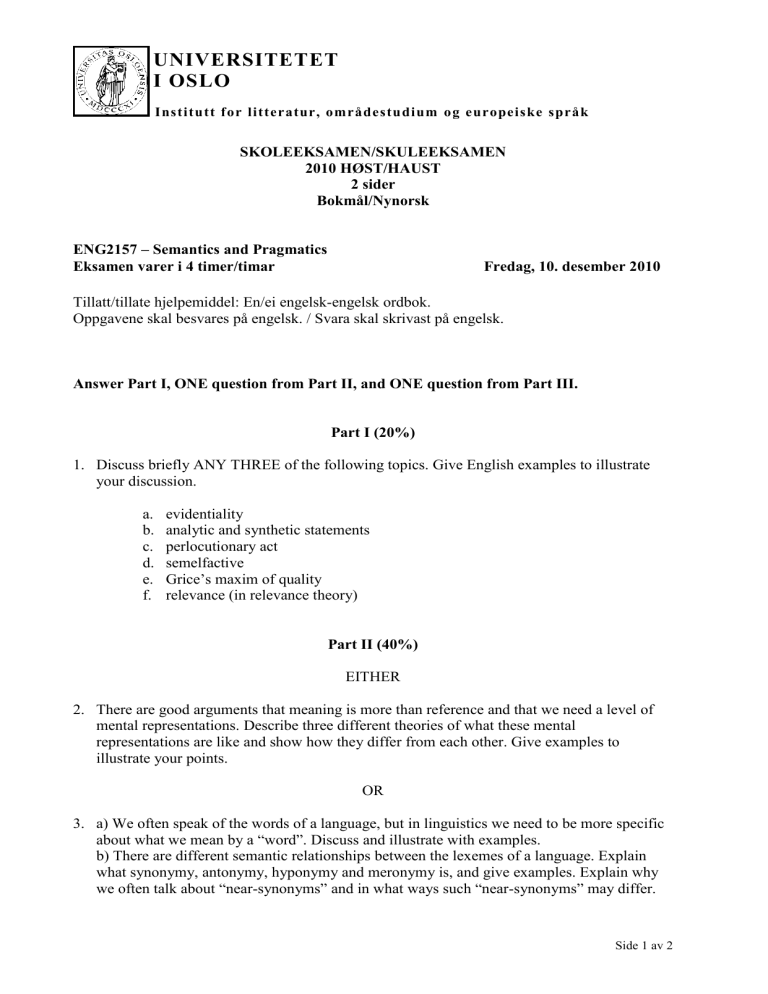
UNIVERSITETET
I OSLO
Institutt for litteratur, områdestudium og europeiske språk
SKOLEEKSAMEN/SKULEEKSAMEN
2010 HØST/HAUST
2 sider
Bokmål/Nynorsk
ENG2157 – Semantics and Pragmatics
Eksamen varer i 4 timer/timar Fredag, 10. desember 2010
Tillatt/tillate hjelpemiddel: En/ei engelsk-engelsk ordbok.
Oppgavene skal besvares på engelsk. / Svara skal skrivast på engelsk.
Answer Part I, ONE question from Part II, and ONE question from Part III.
Part I (20%)
1.
Discuss briefly ANY THREE of the following topics. Give English examples to illustrate your discussion. a.
evidentiality b.
analytic and synthetic statements c.
perlocutionary act d.
semelfactive e.
Grice’s maxim of quality f.
relevance (in relevance theory)
Part II (40%)
EITHER
2. There are good arguments that meaning is more than reference and that we need a level of mental representations. Describe three different theories of what these mental representations are like and show how they differ from each other. Give examples to illustrate your points.
OR
3. a) We often speak of the words of a language, but in linguistics we need to be more specific about what we mean by a “word”. Discuss and illustrate with examples. b) There are different semantic relationships between the lexemes of a language. Explain what synonymy, antonymy, hyponymy and meronymy is, and give examples. Explain why we often talk about “near-synonyms” and in what ways such “near-synonyms” may differ.
Side 1 av 2
Part III (40%)
EITHER
4.
What is pragmatic meaning? Imagine that the sentences below are uttered by speakers in likely contexts. Discuss which parts of the meaning of the utterances would be pragmatic in nature and how the hearer is supposed to work out this meaning. In your answer you should mention at least two of the theoretical approaches on the syllabus (without going into unnecessary detail). a.
Can you pass me the bread? b.
He reached the top. c.
A: Do you want some lunch?
B: I’ve just been to the canteen.
OR
5. What are the main similarities and differences between the theories of politeness advanced by Leech on the one hand and Brown and Levinson on the other? Discuss the examples below in the light of these two theories. a.
If you have a couple of minutes, perhaps you could have a quick look at this report before I send it to the others. b.
You look wonderful! c.
I’d love to come, but unfortunately I’m busy that evening.
Explanation: For an explanation of the mark obtained: contact the responsible teacher of the course no later than 1 week after the exam results have been published in StudentWeb.
Remember to include your name and candidate number. The examiner will then decide whether to give a written explanation or call you in for an interview.
Side 2 av 2
